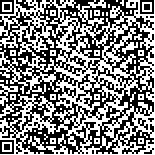| 摘要: |
| 采用生化方法测定了中华绒螯蟹雄性生殖系统及肝胰腺各组织中甘油三酯、胆固醇、蛋白质、葡萄糖和糖原含量的季节变化。结果表明,全年胆固醇含量在肝胰腺、血淋巴和精巢中均有2个高峰,分别在6月和12月、7月和12月、9月和次年1月,且第二峰值均明显高于第一峰值;肝胰腺葡萄糖含量最高值出现在6月,之后逐渐下降,而血淋巴和精巢则在7月,之后亦逐渐下降;肝胰腺和血淋巴出现糖原峰值的时间和葡萄糖相似,但精巢在9月,而副性腺在8月时已达到较高含量,最高值出现在次年1月;蛋白质的变化与上述3种物质基本相似,但血淋巴出现峰值的时间要早于肝胰腺。上述各生化成分变化的先后顺序和连续性表明,肝胰腺内上述物质在进入性腺快速发育期前,经血淋巴向精巢和副性腺转移,精巢对胆固醇和葡萄糖的积累要早于副性腺,这些物质的变化与生殖周期存在明显的相关性。肝胰腺中甘油三酯始终处于积累状态,而精巢和副性腺在前期对甘油三酯的积累极少,直至后期才略有上升,表明甘油三酯并非性腺发育所必需。 |
| 关键词: 中华绒螫蟹,雄性生殖,生化成分,季节变化 |
| DOI: |
| 分类号: |
| 基金项目:国家自然科学基金资助项目,30271012号、30300265号 |
附件 |
|
| SEASONAL CHANGES OF BIOCHEMICAL COMPONENTS IN REPRODUCTIVE SYSTEM OF MALE CHINESE MITTEN-HANDED CRAB (ERIOCHEIR SINENSIS) |
|
WANG Qun, ZHAO Yun-Long, MA Qiang, CHEN Li-Qiao
|
|
School of Life Sciences,East China Normal University
|
| Abstract: |
| Male Chinese mitten-handed crabs(Eriocheir sinensis) were collected monthly from March 2001 to March 2002 near Shanghai. Biochemical components from reproductive system including cholesterol, glucose, glycogen protein and triglyceride were measured. A clear seasonal variation of these biochemical materials that corresponds to the reproduction cycle of the crab has been found. There were two patterns: one-peak or two-peak patterns have been identified. Two peaks in cholesterol content were found in hepatopancreas, hemolymph and testis. They peaked in June and December in hepatopancreas(14.609mg/g and 19.271mg/g respectively), in July and December in hemolymph(5.404mg/g and 21.006mg/g), and in September and the following January in testis(5.898mg/g and 8.544mg/g). The second peaks were clearly higher than the first one. The content of cholesterol in the glandula accessoria however, showed a gradual increase to its highest level in December(12.597 mg/g). The protein content showed a similar two-peaks pattern to that of cholesterol. One-peak pattern appeared in the glucose content. In hepatopancreas, it peaked in June at 20.959mg/g then declined, in hemolymph and testis both peaked in July at 0.897mg/g and 7.178mg/g respectively then gradually declined. For glycogen and triglyceride, one-peak appeared that was similar to that of glucose with a content of 8.234mg/g and 1.627rag/g in hepatopancreas and hemolymph correspondently. In testis and glandula accessoria, however, the glycogen content had reached high content in September(6.68mg/g), and August(5.09mg/g)respectively, and then the content was hold in high level until the next March, and peaked in(8.026mg/g)in January. As to triglyceride, the content peak appeared between January and March in above-mentioned glands or tissues. The content patterns and the order of occurrence in the reproductive system suggested that, before rapid reproductive glands development stage, these biochemical substances were transferred from hemolymph to testis and glandula accessoria. Glucose and cholesterol accumulation in testis took place earlier than in glandula accessaria. Triglyceride in hepatopancreas was always in the state of accumulation, and it was in very tiny amount in testis and the glandula accessoria from March to August, then increase steadily to a peak(6.382mg/g)value in January. It is indicated that triglyceride is not a necessary substance needed in the development of male reproductive glands. |
| Key words: Eriocheir sinensis, Male reproduction, Biochemical components, Seasonal changes |
